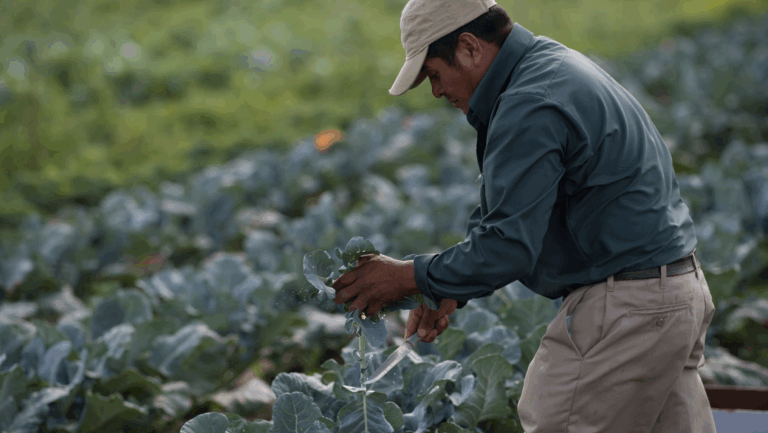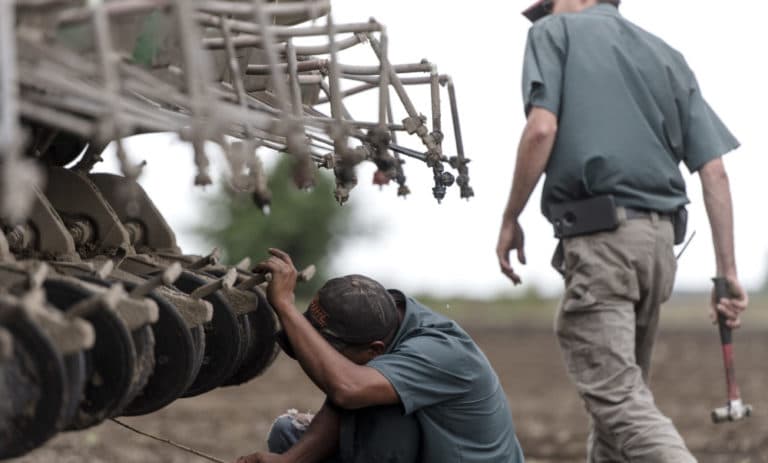Q&A: Agricultural Subsidies and Program Funding Freeze
Farmers are seeking answers amid agricultural subsidy and contract uncertainty.
A string of agricultural policy decisions from the White House has sparked confusion and heightened financial uncertainty for farmers, ranchers, and rural landowners who rely on government contracts as a source of income. As the administration works to cut excess spending and rein in the federal deficit, questions continue to arise about payments for agricultural subsidies and related federal programs.
While updates regarding this topic are changing constantly, we’ve created this resource to answer some of the top frequently asked questions regarding this topic and how it’s impacting American farmers and ranchers.
FAQs: Agricultural Subsidies and Contract Freezes
When did the agricultural subsidy freeze begin?
President Trump issued an executive order to freeze funding from the Inflation Reduction Act (IRA) on his first day in office. This caused confusion on the future of nearly $19.5 billion for farmland conservation programs.
On February 10, a federal judge ordered the administration to unfreeze funds. Farmers and conservation consultants reportedly did not see immediate changes, and a spokesperson for the United States Department of Agriculture (USDA) said the agency would respond after Secretary of Agriculture Brooke Rollins had a chance to analyze reviews.
On February 20, as confirmed Ag Secretary, Rollins promised to honor contracts that were already made directly to farmers, including $20 million in contracts for the Environmental Quality Incentive Program, the Conservation Stewardship Program and the Agricultural Conservation Easement Program. Secretary Rollins also said that the remaining funds are under review to ensure programs relate directly to agricultural initiatives.
“After careful review, it is clear that some of this funding went to programs that had nothing to do with agriculture—that is why we are still reviewing—whereas other funding was directed to farmers and ranchers who have since made investments in these programs. We will honor our commitments to American farmers and ranchers, and we will ensure they have the support they need to be the most competitive in the world.”
– Brooke Rollins, U.S. Secretary of Agriculture
What programs have been affected by the agricultural subsidy freeze?
Most affected ag-focused programs include those related to conservation, energy, and food aid. Reported impacted programs include:
- Environmental Quality Incentives Program (EQIP)
- Conservation Stewardship Program (CSP)
- Agricultural Conservation Easement Program (ACEP)
- Partnerships for Climate Smart Commodities (PCSC)
- USDA’s Local Food Purchase Assistance Program
- USAID programs
- USDA’s Resilient Food Infrastructure Systems Program
- Rural Energy for America Program (REAP)
While select funding has been released for these programs, many operations are still waiting to receive an update. Some operators have turned to social media to express the consequences of these funding freezes on their operations and highlight the importance of untangling the contracts caught in its crosshairs.
What federal funding has been released and what remains frozen?
Rollins has stated that the department was eliminating funding related to diversity, equity and inclusion practices. New contracts for climate-smart agricultural practices also remain frozen as the USDA determines the best use of remaining funds.
“We’re still reviewing other programs to make sure that they are focused on making American agriculture the most competitive in the world and moving our industry into greater prosperity than perhaps we have seen in our lifetime.”
– Brooke Rollins, U.S. Secretary of Agriculture
Louis Aspey, the acting chief of the Natural Resources Conservation Service (NRCS), stated that the release of funds back in February applied to contracts that had already been signed. For now, the release of remaining IRA funds is still awaiting review.
As of March 31, funds for the Higher Blends Infrastructure Incentive Program (HBIIP) were released for 543 projects totaling $537 million in 29 states.
How has the agricultural funding freeze affected energy programs?
On March 6, several U.S. farmers and non-profit organizations filed a lawsuit against the Trump administration regarding the withholding of USDA grants. The five farmers involved in the suit were awarded grants from REAP to install solar panels. They argue they have already entered contracts with solar installers and incurred costs that they fear will not be recoverable if the grants remain frozen. The three non-profit organizations involved in the lawsuit were awarded Forest Service grants. They also say they have had to furlough or lay off staff or cut programs as a result of the funding freeze.
On March 25, the USDA issued a press release announcing that funding will be reinstated for REAP recipients, assuming they will “refocus their projects on expanding American energy production while eliminating Biden-era DEIA and climate mandates embedded in previous proposals.”
“The IRA was marketed as a cure-all but delivered more bureaucracy than benefits for rural families. This course correction puts those investments back to work to support President Trump’s vision for energy independence and sets rural America on a path to lasting prosperity.”
– Brooke Rollins, U.S. Agriculture Secretary
How has the agricultural funding freeze affected conservation programs?
The agricultural funding freeze has created challenges for conservation programs by delaying reimbursements, pausing new projects, and prompting some conservation districts to reassess budgets and resources. Farmers and landowners who rely on federal support for soil health, water management, and sustainability initiatives are facing uncertainty, which may impact the timing and implementation of conservation efforts.
How has the agricultural funding freeze affected food aid?
The dismantling of USAID has created concerns around programs like Food for Peace, impacting American farmers who sell grains and agricultural goods through this program. It also created logistical delays at ports in delivering timely food aid. The State Department has since allowed the shipping and distribution of this food aid to resume.
Following this uncertainty, some Republican lawmakers introduced bills to move the Food for Peace program from USAID to the USDA. Supporters argue this would benefit American farmers by ensuring aid is primarily made up of U.S. food rather than purchasing food locally in other countries.
Government Layoffs
Which agencies have seen layoffs?
Several agencies that support the agriculture industry have experienced federal layoffs, including:
- U.S. Department of Agriculture (USDA)
- Farm Service Agency (FSA)
- Natural Resources Conservation Service (NRCS)
- Agricultural Research Service (ARS)
- Food and Drug Administration (FDA)
- U.S. Agency for International Development (USAID)
Will there be more layoffs?
The short answer is yes. The Trump administration, through the Office of Management and Budget (OMB) and the Office of Personnel Management (OPM), has instructed federal agencies to develop plans for large-scale reduction in force (RIF). Agencies were required to submit initial plans by March 13 and final reorganization plans by April 14.
How might these layoffs affect farmers and ranchers?
There are several secondary consequences to mass firings across agricultural agencies like the USDA that could create secondary complications for American farmers and ranchers, including:
- Delays in USDA Services: Staffing cuts at agencies like the Farm Service Agency (FSA) and Natural Resources Conservation Service (NRCS) may slow down processing times for loans, disaster relief, and conservation program applications.
- Reduced Technical Assistance: Fewer agricultural extension agents and NRCS field staff could mean less access to on-the-ground expertise for soil health, water conservation, and land management.
- Disruptions to Food Safety and Inspection: Layoffs at the Food Safety and Inspection Service (FSIS) could lead to delays in meat processing plant inspections, slowing down production and potentially affecting supply chains.
- Impact on Farm Loans and Grants: Fewer personnel at agencies overseeing farm credit programs may cause delays in loan approvals and payments, affecting cash flow for operations.
- Pest and Disease Response: Layoffs among animal health professionals could slow response times for outbreaks and disease management.
So far, we have yet to see any direct impact of recent layoffs, but it will be important for farmers and ranchers to be proactive in managing the status of programs and grants they are actively involved in to anticipate potential delays.
Action Items for Farmers Navigating Agricultural Subsidy Uncertainty
Is there any government funding available to farmers?
Despite initial concerns, the $10 billion in economic relief aid for farmers who experienced losses during the 2024 crop year is now officially available through the Emergency Commodity Assistance Program (ECAP). Farmers can apply online or through local FSA offices from March 19 to August 15, 2025.
What should I do if my operation is counting on agricultural subsidies or federal programs for revenue?
- Stay Informed: Keep up with the latest updates from reliable sources like the USDA news room, agricultural extension offices, and yours truly. Monitor any legal developments or congressional actions that may restore or modify funding.
- Assess Your Finances: Review your budget and stress test your financial standing to determine operational resilience without agricultural subsidies. Identify any areas where you can reduce costs or increase efficiency.
- Explore Alternative Funding: Consider applying for local/state-level grants or private loans. Speak with your trusted lender to discuss flexible lines of credit, refinance and cash-out loans, or interest-only loan options.
- Engage with Lawmakers: Contact your state representatives or congressional offices to share your concerns and advocate for timely resolution. Many lawmakers are receptive to hearing directly from constituents facing hardships.
- Prepare for Delays: Develop contingency plans to manage operations in case funding delays persist. Consider adjusting planting or livestock cycles, postponing major investments, or renegotiating contracts.
- Seek Legal Advice if Necessary: If you face specific financial or contractual challenges, consulting with an agricultural attorney can clarify your rights and options.
AgAmerica Stands with Farmers Through the Ups and Downs
The agriculture community has a long history of overcoming obstacles. At AgAmerica, we understand that farmers often face hardships outside their control. Our goal is to equip farmers with the best resources and flexible financing solutions possible to help them navigate any challenge with confidence and peace of mind.
Don’t wait for fate to decide your operation’s financial health. Contact us today to explore ways you can preserve liquidity now and increase your financial resilience.






